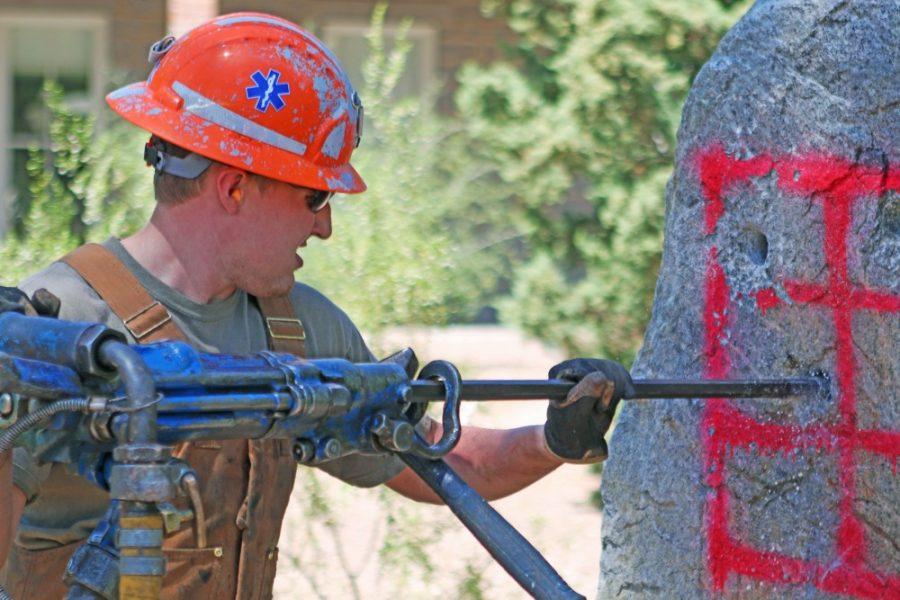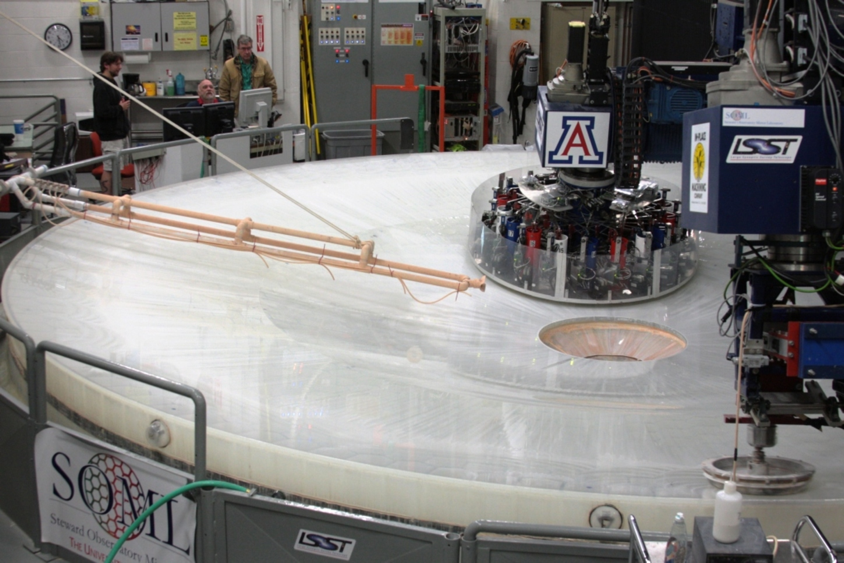On the morning of April 21st, a group of hard-hatted, safety-goggled, (mostly) bearded individuals gather near a 20-ton boulder next to Old Main. Students of UA’s Mining and Geological Engineering department, they’d come to test their mettle and see who could drill the deepest hole into the massive rock—using a drill weighing close to 120 pounds with only two minutes to do it.
The Mining and Geological Engineering department competes in the International Intercollegiate Mining Games, which began in Idaho in 1979 as a tribute to miners who perished in the Sunshine Mine disaster of 1972. The competition, which is hosted by mining colleges and universities around the world, features gold panning, jackleg drilling, hand steeling and various other historical forms of mining. The UA team won that first competition in 1979.
Next year, the UA mining department will be traveling to England to compete against other international teams for the Sunshine trophy.
However, today’s competition has a much more laid back atmosphere.

“Today is more for student participation,” said James Werner, assistant director of the San Xavier Underground Mining Laboratory, “this isn’t the legit one. This is just the interdepartmental, fun one.”
At 10:35 a.m. the group was given permission to begin drilling. Using a trailer-towed generator provided by Atlas Copco and drilling equipment brought over from the San Xavier mine, the sound of a jackleg drill shattering rock emitted deafening sound around Old Main. Water sprayed out near the tip of the drill bit, to help reduce friction and wet down dust caused by the steel bit pounding against the rock.
RELATED: Rolling coal: UA engineer develops sustainable concrete substitute
Back when it was first invented in the 1930s, the jackleg revolutionized the speed and efficiency with which miners could drill shafts for establishing supports as well as blast holes for dynamite. The jackleg is named after the drill’s hydraulic piston, which acts as a support leg for the machine. By adjusting the piston, miners can change the height of the drill as well as provide extra pressure for boring into the surface of the rock.
“So, they start from this position,” Werner explained, indicating with the 120-pound jackleg drill on the ground before him. “They have to put the steel [drill bit] in, get the drill up on their own, get it up to the rock, and start collaring the rock.” Collaring is the term used to describe drilling the beginning of a new hole, and from watching the mining students attempt this, the difficulty of the process became very apparent.
Enough pressure must be consistently applied to the steel bit in order to get the hole started. The miner must use their hand to grasp near the end of the drill bit and keep it stabilized on the rock, otherwise the drill will rattle and shake violently. However, once the miner has collared the hole deep enough to insert the drill bit, they will then place the entirety of their weight behind the drill and lean on the piston leg to help drive horizontally into the rock’s surface. With enough practice, the more veteran participants, such as Werner, can achieve a depth of around 18 inches in just two minutes.
RELATED: Competition tasks students to program better self-driving cars
With only seven individuals participating this year—almost half that of last year—each participant is given two rounds to drill instead of just one. Their final score is determined by adding together the combined depths achieved in each round, at which point, the winner of the day is ceremoniously tossed into the Berger Memorial Fountain outside the west entrance of Old Main.
The winner of this year’s competition—and oddly enough, the only non-bearded participant—was 22-year old Nathan Kraft, a UA student with a year and half worth of experience in the mining engineering program.

With a combined depth of 22 inches, Kraft was able to drill just barely deeper than his competition and win the day. At which point, he was then hoisted onto the shoulders of his engineering cohorts and delivered unto his watery accolades.
Truly a sweet victory for Kraft and mining heritage everywhere.
Follow Owen Zerambo on Twitter.









